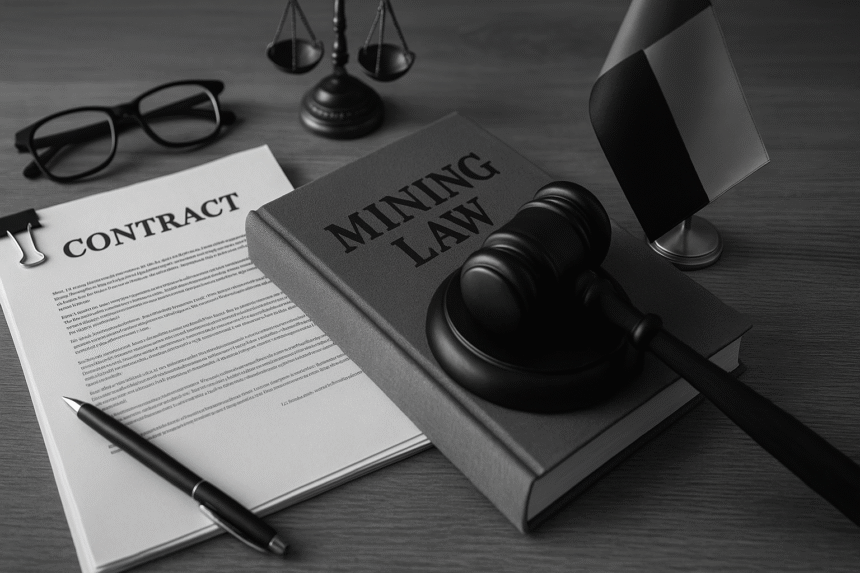10 Legal Documents Every Mining Exporter Should Have
Introduction: Why These Documents Matter
Exporting minerals may seem like a purely logistical or commercial task, but without the right legal documents in place, you risk delays, losses, fines, or even legal disputes. Whether you’re shipping iron ore, copper, gold, or rare earth minerals, having your paperwork in order ensures compliance, trust, and successful delivery.
This guide outlines the ten legal documents every mining exporter should have. If you’re a mine owner, export manager, or logistics consultant in the mining sector, this list is your foundation for smooth and risk-free exports.
Who This Is For
- Mining companies starting export operations
- Legal advisors working with mining exporters
- Export consultants in minerals and metals
- Investors or stakeholders in mining ventures
This list is especially useful when:
- Registering a new mining business
- Preparing your first export shipment
- Expanding into new international markets
1. Export License
You can’t legally ship minerals out of most countries without a government-issued export license. This document verifies that your business is approved to export specific minerals in accordance with national laws. It usually requires submission of company registration documents, tax records, and compliance certificates.
Takeaway: Apply early, as approvals may take weeks or months.
2. Commercial Invoice
The commercial invoice is a legal document between the exporter and buyer. It details the shipment value, mineral type, quantity, delivery terms, and payment conditions. Customs authorities in both countries rely on it for duties and verification.
Takeaway: Include HS codes, Incoterms (like FOB or CIF), and currency details.
3. Packing List
This document itemizes each shipment package—whether in containers or bulk cargo. It helps freight forwarders and customs officials confirm contents and prevent smuggling.
Takeaway: Match the invoice values and descriptions exactly.
4. Certificate of Origin
Usually issued by a Chamber of Commerce or trade authority, this certificate verifies where the minerals were mined. Some countries use it to apply preferential tariffs or validate compliance with import restrictions.
Takeaway: Be ready to submit mining site records or government verification.
5. Mining Concession Agreement or Lease
This proves your legal right to extract and sell the minerals in question. Customs and international buyers may request it to ensure the exporter has rightful title over the cargo.
Takeaway: Keep this agreement updated and notarized.
6. Sales Agreement / Offtake Contract
This outlines terms between the mining company and the buyer, often including volume commitments, pricing structure, payment method, delivery schedules, and liability terms.
Takeaway: Include force majeure, dispute resolution, and governing law clauses.
7. Shipping or Bill of Lading (B/L)
The Bill of Lading is proof that your goods have been loaded for shipment. It also acts as a title document and receipt. Banks require this in letter of credit transactions.
Takeaway: Double-check the consignee and notify party details.
8. Insurance Certificate
This document verifies that the shipment is covered by marine cargo insurance. It protects your financial interests against loss, damage, or theft.
Takeaway: Confirm that your Incoterms match your insurance obligations (e.g., under CIF terms, exporter insures the cargo).
9. Customs Declaration Form
You’ll need to submit this at your local customs office to initiate export clearance. It typically includes export license number, Harmonized System (HS) code, invoice value, and shipping details.
Takeaway: Mistakes in this form cause delays. Review every entry twice.
10. Environmental & Compliance Certificates
Many jurisdictions now require environmental impact documentation, sustainability compliance declarations, or export permits from environmental agencies.
Takeaway: Keep digital copies ready for submission to buyers and government agencies.
Mini Case Example
A copper exporter in Nigeria once faced a six-week shipment delay because their Certificate of Origin was not validated by the authorized chamber. The buyer’s bank rejected the documents, leading to late penalties. Once the company standardized their export checklist—including pre-verification with the issuing body—they avoided future delays and improved client trust.
Closing Thoughts
Mining exports are high-value and high-risk—don’t let avoidable paperwork errors disrupt your operations. With these ten legal documents, you protect your company from regulatory fines, contract disputes, and shipment delays.
Need help reviewing your mining export contracts? Book a legal consultation



Leave a Reply